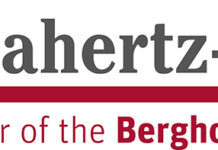By Nancy Cates, contributing writer, UV+EB Technology

As employers scramble to find applicants with STEM qualifications, UV and EB technology educators are reaching out to high school students and undergrads to steer them toward relevant graduate programs. In addition, educators are working with industry leaders to cooperate on research initiatives and to create short courses to enhance the knowledge and skills of current employees.
The University of Iowa, Iowa City, starts young, annually working with two to four high school students, as well as three to six undergrads and seven to 10 doctoral students.
“Both chemical engineering and chemistry undergraduate students are recruited for our graduate program in chemical engineering,” said Julie Jessop, associate professor of chemical and biochemical engineering. “UI CBE faculty make recruiting visits to various chemistry programs around the nation, since we have an excellent track record of transitioning students with chemistry backgrounds to chemical engineering.”
Research is shared via patent applications and in such journals as Polymer, Chemistry of Materials, Macromolecules, Biomacromolecules, Advanced Materials, Biomaterials, Journal of Polymer Science Part A or Journal of Applied Polymer Science. Faculty and students also present at conferences such as RadTech (Association for UV and EB Technology), AIChE (American Institute of Chemical Engineers) or ACS (American Chemical Society).
“We have 100 percent placement,” Jessop said, “with graduates typically going to work in companies with UV/EB thrusts. Member companies of the Photopolymerizations Center, such as 3M, often hire our graduates since they have watched them grow throughout the course of their sponsored research projects.”
Jessop’s research focuses on spectroscopic characterization of polymer reactions, dental composites, hybrid photopolymer resins, cationic ring-opening photopolymerizations, polymers from renewable resources and electron-beam polymerization. Allan Guyman, professor of chemical and biochemical engineering, is co-director of Iowa’s Photopolymerizations Industry/University Cooperative Research Center. His research deals with polymer reaction engineering, UV-curable coatings, polymer/liquid crystal composites, controlled release and templated and ordered polymerizations.
A collaborative emphasis enables researchers from the University of Iowa and the University of Colorado-Boulder to work with industry representatives within the shared administrative structure of the Photopolymerizations Center of the Industry/University Cooperative Research Center. In Iowa, the center is housed in the Advanced Technology Laboratories and includes departments of Chemical and Biochemical Engineering as well as Chemistry and Operative Dentistry. In Colorado, where professor Christopher Bowman is co-director, the collaborative units include the Department of Chemical Engineering and the School of Dentistry, and facilities include the labs of the senior investigators as well as facilities within the Chemical Engineering department. As co-directors, Guyman and Bowman work with an industry advisory council to look at unique applications, enhance understanding of photopolymerizations, develop improved monitoring methods and to optimize and control processes.
At the University of Colorado-Boulder, the Bowman Research Group includes about two dozen graduate and post-doctoral researchers who investigate the formation, structure and properties of crosslinked polymeric materials, especially those formed from photopolymerization reactions. According to the university website, the group investigates development of new materials and photopolymerization mechanisms for applications such as sequence-controlled polymerization of “click” nucleic acids (CNAs), “click” reactions for polymer networks, covalent adaptable polymer networks, novel dental materials and photoinduced synthetic vesicles for artificial cells. Research results are shared in such journals as Science, Advanced Materials, Macromolecules and Biomacromolecules.
RadTech and ACS conferences are popular venues for sharing research advances from Lipscomb University, Nashville, Tennessee, according to Brian Cavitt, associate professor of chemistry. He leads UV research at Lipscomb, with a focus on application.
“We look at everything from structure of property relationships to kinetics and new materials,” Cavitt said. “We do a little predictive modeling as well.”
“We are one of very few – or maybe the only program – for undergraduates only,” Cavitt continued. “We recruit by word of mouth. Someone will catch the research bug, tell a friend and move on from there. We also have seminars to present the research and current trends in the field. We currently have about half a dozen undergrads.”
Most Lipscomb students are bound for graduate school. “Not too many go directly into industry,” Cavitt said. “Most are on a preprofessional route and will go to pharmacy or medical school. The undergraduate research bolsters their resumes and gives them valuable experience in thinking as a professional.”
In an effort to assist industry professionals as well as traditional students, RadTech International North America (RadTech) and the State University of New York’s College of Environmental Science and Forestry (SUNY-ESF) created a program to promote both academic and professional development. The result, based at SUNY-ESF, Syracuse, is a combination of online noncredit short courses and advanced courses that can be taken for graduate credit or as a professional development program.
The SUNY-ESF short courses for the fall 2016 semester offered start dates in October, November and December for four- to six-hour online classes in Principles of Energy Curing Technologies and Basics of UV-Curable 3D Printing. Other courses are being considered. The graduate-level online courses currently offered include Introduction to Polymer Coatings; Radiation Curing of Polymer Technologies; and Radiation Curing Equipment, Instrumentation and Safety. Students who complete all three courses for credit may apply for a Graduate Certificate in Radiation Curing from the State University of New York. For more information, see www.esf.edu/outreach/radcuring.
The website of the College of Technology, Eastern Michigan University, Ypsilanti, indicates that short courses are available on a limited basis through its Polymers and Coatings Technology unit, where professor Vijay Mannari is the graduate coordinator. Recently offered course topics include Basics of Polyurethane Coatings; Coatings, Paint and Corrosion Control; and Fundamentals of Resins and Polymers for Paints and Coatings.
Along with professors Jamil Baghdachi and John Texter, Mannari works with about a half-dozen graduate students. Research results are shared via patents; presentations at conferences such as RadTech, ACS and the Metal Protection through Coatings Technology Conference; and via journals such as Applied Polymer Science and Coatings Technology and Research.
Enhancing a partnership with industry is a goal at the University of Akron (Ohio), where Mark Soucek, professor in the Department of Polymer Engineering, leads a research group focused on coatings. Soucek is working to develop a UV-Curable Powder Research Coatings Center, “where industrial and academic partnerships are formed to move the UV-curable powder coatings into new coating markets.”
“I’m working more in UV-curable powders and high- or low-temperature curing,” Soucek said. “We can use it in advanced manufacturing and for 3D printing.” He also sees a trend toward use of longer UV wavelengths, which can allow workers with less training to use the technology safely.
Research at the University of Akron focuses on crosslinked coating systems: autoxidatively crosslinked, high solids, crosslinkable latexes, UV-curable and thermosetting powder. Results are shared via participation in conferences, such as the European Symposium of Photopolymer Science, and in journals, including Chemistry of Materials, Journal of Coatings Technology, Progress in Organic Coatings, Macromolecular Materials and Engineering and European Polymer Journal.
Soucek’s graduate research group typically includes about 10 students, including some master’s level students who come from China.
“We have relationships with Chinese institutions that result in bringing in some students,” Soucek said. “They come to participate in the research, and we have about 100 percent placement, so we don’t need to do recruiting.”
Recent Akron graduates have found employment with companies such as Sartomer and BASF.
Both graduate students and undergrads also enjoy high rates of placement after completing their work at Ohio’s Bowling Green State University.
At Bowling Green’s Center for Photochemical Sciences, “Research focuses on studies of the interaction of light with physical, chemical and biological systems,” said Alexander Tarnovsky, professor in the Department of Chemistry.
The multidisciplinary center, directed by professor Malcolm Forbes, includes faculty representatives from the departments of Chemistry, Physics and Astronomy, and Biological Sciences. It directs research as well as teaching for more than 50 graduate students seeking a degree in photochemical sciences. The Department of Chemistry – which typically lists about 120 undergrad majors, many of whom are involved in center research – directs undergraduate teaching.
The center’s reputation draws a high percentage of international doctoral students, Tarnovsky said, representing India, Sri Lanka, Lebanon, Russia, Iran, China and Nepal. Undergrad students are recruited nationwide, and most come from Ohio and neighboring states.
“Our research group studies the mechanisms and dynamics mechanisms of ultrafast (femto- and picosecond) photoinduced processes,” said Tarnovsky. “These ultrafast spectroscopy studies are carried out using sub-100 fs light pulses from femtosecond amplified lasers, with wavelengths of these pulses extending from near-infrared to deep-ultraviolet and ultraviolet spectral regions.”
In addition to journals – such as Journal of Physical Chemistry, Journal of the American Chemistry Society, Journal of Chemical Physics and Nature – Tarnovsky said research is shared via press releases and BGSU Zoom News, with outreach to local and national media and international scientific communities.
Research has shifted from UV-curable nanocomposites as barrier materials and UV-curable materials for electronics to photopolymerization of novel bio-based resin systems at North Dakota State University, where Dean Webster, professor in the Department of Coatings and Polymeric Materials, leads the program.
“We are studying the structure-property relationships of these systems and identifying potential applications in the fields of coatings, dental materials and 3D printing,” Webster said.
Webster’s program graduates are in high demand at all degree levels. Before graduation, most have secured a job with a major company in the paint, coatings or polymer industries. The program currently includes two graduate students, a postdoc and an undergrad. Like most of the other institutions, they share research results via a mix of peer-reviewed journals, other media and participation in conferences such as ACS or the American Coatings Show.
“There are many opportunities to expand the scope of UV/EB technology,” Webster said. “Our current focus is in some interesting new types of bio-based resins that have the potential to eliminate chemicals of concern while yielding fast cure rates and exceptional performance properties.”
These university programs and others across the US are providing valuable insights into the technologies used in a wide variety of industries, and the students currently enrolled will become tomorrow’s leaders in ultraviolet and electron beam applications.






